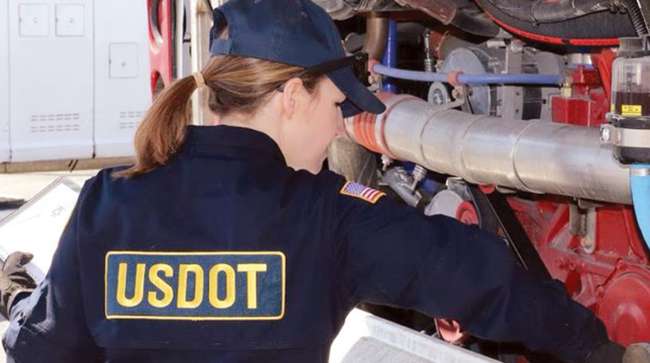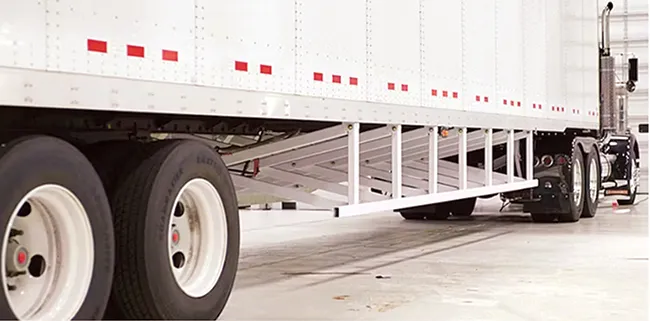Senior Reporter
On Regulation Front, 2023 Was a Year of Wins and Losses

[Stay on top of transportation news: Get TTNews in your inbox.]
Over the last 12 months, Department of Transportation officials have been claiming safety gains thanks to the National Roadway Safety Strategy, billions of federal dollars for infrastructure improvements, and regulatory proposals aimed at mandating assisted driver systems for heavy trucks.
At a House Transportation Committee hearing on Dec. 13, Ann Carlson, acting administrator of the National Highway Traffic Safety Administration, said the trend in fatal accidents has slightly decreased in 2023.
That’s not exactly how the year began. In a January session at the Transportation Research Board conference, top DOT officials were calling the state of the regulatory union an “urgent crisis,” largely due to a troubling increase in the number of fatal crashes on the nation’s roadways.
As a result, in 2023 federal and state regulators began putting a full-court press on truckers with a variety of proposed rulemakings. At the federal level, that included efforts to mandate automated emergency braking and side underride guards. Meanwhile, businesses in California continued to combat legal efforts by state lawmakers to tamper with the industry’s decadeslong independent contractor model, and also contended with lawmakers’ long-range plans to compel fleets to transition to electric vehicles.

For truckers, 2023 was a year of plaintiff attorneys still winning nuclear jury verdicts and hefty out-of-court settlements in truck-accident litigation. But there was progress by American Trucking Associations’ federation shepherding legislation passed in state legislatures limiting damages in accident cases.
Then there was the problem with marijuana, which continued to thin out large numbers of truck drivers who tested positive for pot, but were not willing to enter into a required return-to-duty program.
“While 2023 had some regulatory victories, our work is not done and will continue into 2024 and beyond,” said Dan Horvath, ATA’s senior vice president of regulatory affairs and safety policy.
“We were busy drafting comments in response to rulemakings this year,” Horvath said. “While all significant in some way, the team weighed in on some proposals that were pretty comprehensive. Our comments in response to the CSA/SMS methodology changes stands out, as well as our recent response to the Safety Fitness Procedures.”

Side underride guards were the subject of more than one proposed rulemaking. (AirFlow Deflector Inc.)
To be sure, there were several significant proposed rulemakings and announcements posted over the past year, many drawing concerned public comment from the industry. Some of them included:
- In December, the Federal Motor Carrier Safety Administration proposed allowing motor carriers to appeal state agency Requests for Data Review to federal regulators when they believe a state decision of their crash review is “incomplete or incorrect.”
- In April, NHTSA proposed that side underride guards be installed on all new heavy trucks.
- In June, NHTSA and FMCSA issued a proposed rulemaking that would require automated emergency braking on all new heavy trucks.
- In August, FMCSA proposed changes to carrier fitness determinations.
- In December, a federal drug advisory group began the cumbersome process of placing fentanyl on the list of drugs to test federal safety-sensitive employees and truck drivers for drug use.
- In an effort to stem financial fraud in the broker industry, FMCSA in December amended its complex regulation pertaining to financial responsibility requirements for brokers of property and freight forwarders.
- Also in 2023, DOT appointed special committees to study side underride guards and predatory leasing, and FMCSA announced plans for a new study on detention time that drivers all too often experience.
- In February, FMCSA announced proposed changes to its Safety Measurement System to reduce and prevent crashes. The SMS uses data from roadside inspections, crash reports, and investigations to identify and prioritize for intervention the motor carriers that pose the greatest risk to safety.
While truckers waited all year expecting a final hair drug testing rule, it hasn’t happened.
Neither has the end of the ongoing staged accidents with trucks in the New Orleans area, where so far more than 60 individuals have been found guilty.

A federal drug advisory group has begun the process of placing fentanyl on the list of drugs to test truck drivers for drug use. (Darwin Brandis via Getty Images)
There still has not been movement on an FMCSA “beyond compliance” plan to reward carriers for adopting safety technologies on trucks before they are mandated.
At year’s end, the California Trucking Association was continuing its court challenge to block AB 5 legislation aimed at reducing the number of owner-operators in the state, and attorneys representing ATA prepared to fight an appeal by the Rhode Island DOT’s truck-tolling plan that was struck down by a district court judge.
“It was good to see the agency move forward with some rulemakings that have been in limbo for some time, as well as seek to correct existing rules, such as CSA/SMS, with proposed revisions,” Horvath said. “Trucking is already heavily regulated, and while some new rules may provide a benefit, they aren’t always the solution to highway safety. Taking a look at what’s been in place and proposing revisions is a fitting step in the safety regulatory process.”
Some of the proposed changes included reorganizing the SMS’ safety categories, or BASICs; organizing roadside violations into violation groups for prioritization purposes; simplifying violation severity weights; adjusting some of the thresholds that identify companies for possible intervention; and more changes aimed at comparing similar motor carriers to each other, the agency said.
To be sure, things changed in 2023 since the troubling, but hopeful session of DOT top officials in January.
Want more news? Listen to today's daily briefing above or go here for more info
“We are in a crisis, particularly that after decades of improvements, we’ve seen these changes more recently as the numbers are moving in the wrong direction,” Emily Schweninger, DOT’s senior policy adviser for transportation health and safety, said Jan. 6 at the annual event that brings together thousands of transportation professionals, researchers and academics. “It’s been made very clear by the secretary that the crisis is very urgent, that it’s unacceptable, but that we have an opportunity to make a change.”
Now DOT officials say they are optimistic the crisis is turning around since the Biden administration has responded with the National Roadway Safety Strategy, a “comprehensive approach” that DOT called an “immediate response.”
“In addition to this, we’ve had this tremendous opportunity with the bipartisan infrastructure law in leveraging this once-in-a generation investment in thinking how we can piece all of these things together to make our roadways safer,” Schweninger added.


